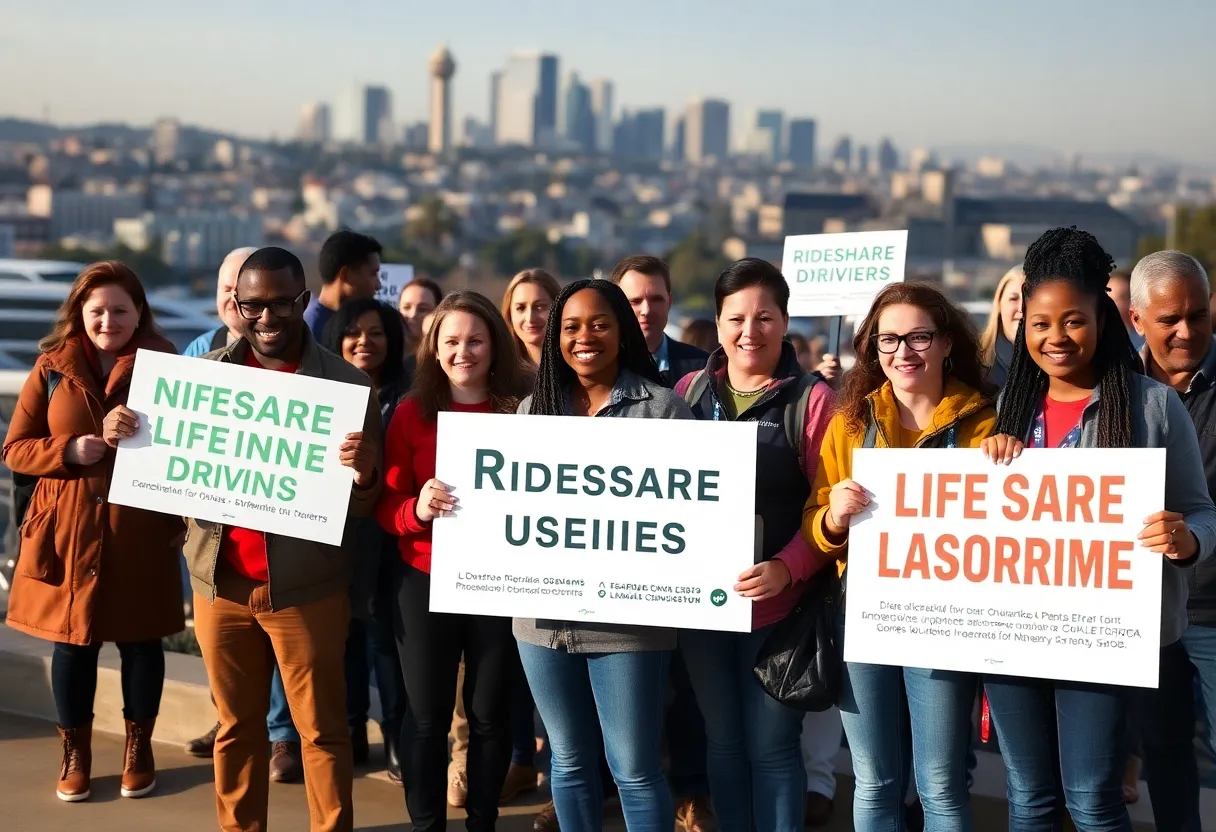California, August 30, 2025
News Summary
California has reached a significant milestone by allowing Uber and Lyft drivers to unionize through a landmark agreement. This legislation enables approximately 800,000 drivers to collectively bargain for improved wages and working conditions, backed by Assembly Bill 1340 and Senate Bill 371. While it brings hope for better treatment of gig workers, it does not extend to all gig workers and lacks certain protections like the right to strike, raising questions about its overall efficacy.
California has reached a significant milestone for gig workers with a landmark agreement that allows Uber and Lyft drivers to unionize. The deal introduces a state-supervised framework for drivers to collectively bargain for better wages and working conditions.
This partnership between Uber Technologies Inc. and Lyft Inc. is expected to relieve the companies from costly insurance burdens while providing drivers, totaling approximately 800,000, the ability to organize and negotiate collectively. Backed by California’s legislative leaders and Governor Gavin Newsom, this agreement includes the passage of Assembly Bill 1340 (AB 1340), which facilitates this driver bargaining initiative.
Included in the agreement is Senate Bill 371 (SB 371), which lowers the uninsured motorist insurance requirement for rideshare companies. The reform will reduce coverage from $1 million to $60,000 per driver for uninsured motorist coverage and $300,000 per accident. This change addresses Uber’s claims that insurance costs currently consume up to 45% of fares in cities like Los Angeles.
AB 1340, sponsored by the Service Employees International Union (SEIU), represents what has been described as “the largest expansion of private sector collective bargaining in California history.” This legislation provides drivers with a structured means of organizing while maintaining their legal status as independent contractors, a classification established by Proposition 22 in 2020. The new collective bargaining model allows drivers to negotiate terms such as pay and job protections without federal supervision.
The agreement defines a legal pathway for drivers to choose union representation through a petition process requiring at least 10% of active drivers’ signatures. However, ongoing disputes regarding ride-hail drivers’ classifications and compensation continue to evolve in courts and legislatures.
While this historic agreement focuses on drivers for Uber and Lyft, it does not extend to other gig workers, such as those delivering food through applications like DoorDash. This limitation has led to some skepticism among experts about whether this new unionization pathway will substantially improve working conditions for drivers.
Despite concerns, activist drivers are hopeful that the agreement will amplify their voices and improve their ability to address grievances effectively. The legislation also serves as a potential model for similar agreements across other states, as nationwide discussions surrounding gig worker rights gain momentum.
Importantly, the agreement, while promising, lacks certain protections that some advocates had sought, including the right to strike and access to employer-provided data on wages. These omissions might impact the efficacy and appeal of the new bargaining framework among drivers.
The agreement is expected to fast-track through the California legislature by mid-September, marking a pivotal shift in the dynamics between technology companies and labor unions. The anticipated changes signal a new chapter in the ongoing struggle for gig economy workers seeking fair treatment and recognition in an evolving job landscape.
FAQ Section
What is the main purpose of the new agreement for Uber and Lyft drivers in California?
The agreement allows drivers to unionize and collectively bargain, addressing wages and working conditions under a state-supervised framework.
How many drivers are expected to be affected by this legislation?
Approximately 800,000 drivers in California will have the opportunity to organize under this new framework.
What are Assembly Bill 1340 and Senate Bill 371?
AB 1340 facilitates union representation for drivers, while SB 371 reduces the uninsured motorist insurance requirement for rideshare companies.
What limitations exist within the new agreement?
The agreement does not extend to other gig workers, like those delivering food through apps such as DoorDash, and lacks certain protections like the right to strike.
What is the anticipated impact of this agreement?
The agreement aims to improve drivers’ working conditions and provide them with a stronger voice, while also making rideshare services more affordable for passengers through reduced insurance costs.
Key Features of the Uber and Lyft Drivers Agreement
| Feature | Description |
|---|---|
| Unionization | Allows drivers to unionize and collectively bargain for better wages and conditions. |
| Legislation | Includes AB 1340 for driver bargaining and SB 371 for insurance requirements. |
| Driver Count | Affects approximately 800,000 Uber and Lyft drivers in California. |
| Insurance Reform | Reduces uninsured motorist coverage requirements significantly. |
| Independent Contractor Status | Does not change the independent contractor classification established by Proposition 22. |
Deeper Dive: News & Info About This Topic
- Los Angeles Times
- Politico
- TechCrunch
- San Francisco Chronicle
- WebPro News
- Wikipedia: Gig Economy
- Google Search: Uber Lyft drivers unionization
- Google Scholar: Uber Lyft drivers unionization
- Encyclopedia Britannica: Gig Economy
- Google News: Uber Lyft unionization

Author: Anaheim Staff Writer
The Anaheim Staff Writer represents the experienced team at HEREAnaheim.com, your go-to source for actionable local news and information in Anaheim, Orange County, and beyond. Specializing in "news you can use," we cover essential topics like product reviews for personal and business needs, local business directories, politics, real estate trends, neighborhood insights, and state news affecting the area—with deep expertise drawn from years of dedicated reporting and strong community input, including local press releases and business updates. We deliver top reporting on high-value events such as major conventions at the Anaheim Convention Center, including NAMM and VidCon, exciting games at Angel Stadium and Honda Center, and developments at Disneyland Resort Our coverage extends to key organizations like the Anaheim Chamber of Commerce and Visit Anaheim, plus leading businesses in hospitality, entertainment, and innovation that power the local economy As part of the broader HERE network, including HERECostaMesa.com, HEREHuntingtonBeach.com, HERESantaAna.com, and HERELosAngeles.com, we provide comprehensive, credible insights into Southern California's dynamic landscape.




